The Life of the Vikings: From Settlements to Sea Journeys

Contents
The Vikings in Greenland
The word Viking most likely comes from the Nordic languages. It comes from the word vík, meaning bay, or creek. A Viking was therefore “one who dwells in the bays”. Historical Frankish chronicles refer to the Vikings as Normans, the Germans called them Ascomanni (“Ash-men”, probably after the wood of the ships that brought them), the Irish Lochlannach, the Finns Ruotsi and the Arabs Majus (pagan sorcerers or fire-worshippers).
Vikings in their typical armour
Photo: Šárka Bejdová
Pirates from the North also settled in Greenland in the late 10th century. The name of the island Groenland, or "Green Land", had its justification - Europe at that time going through climatic amelioration, a warm period that made it possible to grow quality vines in Britain. Scandinavian ports did not freeze in winter, and the Greenland coast was green and relatively fertile, allowing good hunting and fishing opportunities. Greenland became isolated only centuries later when the temperatures dropped, shortening down the shipping routes.
Ireland was somewhat fortunate in its misfortune, because the Viking raids provided a link to the rest of the world. Moreover, the Northmen laid down the foundations of major Irish cities, including Dublin.
Dragonships
The Vikings sailed the seas in dragon ships. Dragonships (drakkars) were large longships that had carved heads of dragons and other magical beings mounted on their bow. Even the Romans knew the ships used by the Northmen, and we have many examples and wrecks that gives us a pretty good idea about what the Viking ships looked like.
Reconstructed Viking longship, Hugin, Denmark
Edgar Pachta's archive
The Vikings used rather long ships with a raised bow and stern. Drakkar (dragon boat, Danish drageskibe) is the most popular and the biggest type of Viking longships. The dragon heads on drakkars often were decorated with bright colours, sometimes gold. Dragon heads had a mystical significance, but also intimidated the enemy.
The ships of warlords and leaders were decorated with rich carvings and gold. The sails were made of multi-coloured strips. The shields hanging on the sides of the ships were also colourful (e.g., the famous Oseberg drakkar had alternating yellow and black shields).
However, it seems that the Vikings were not nearly as skilled sailors as is popularly believed. They tried to keep close to the shores, and were very reluctant to explore unknown seas. One of the bravest Nordic sailors, St Olaf (who was otherwise not exactly a “saint”), mostly sailed along the coastline, sometimes even proceeded on land.To move faster, the Vikings sometimes took their horses with them on raids, and they transported them in their ships.
And that wasn’t easy. For example, a group of Danish researchers constructed a replica of the ship Ladby to test transporting horses in 1963. This was a vessel with an extremely shallow draft and low sides, allowing horses to easily jump out of the ship. The shallow draft, however, did not provide stability in the open sea, which was dangerous both for the crew and the horses. It is likely that the Vikings used large ships, adapted for transport of horses, with platforms and other structures that made it easier.
A rare photography from the reconstruction of the vessel adapted for horse transport in 1963
Edgar Pachta's archive
Such “transport vessels” were probably part of the army of William the Conqueror, who invaded England in 1066. The backbone of his army was heavy cavalry.
Saxons vs Normans
Saxons and Northmen formed a very close ethnic group in England until 11th century. However, their armies were soon to clash with the heavy cavalry of William the Conqueror.
The backbone of the Saxon armies originally consisted of individual companies commanded by chieftains. Later, these companies transformed into specialized units called housecarls - personal guards of the king, and later also of warlords.
But the king and his guards could not be everywhere. This is why local defence was the responsibility of local chieftains, earls (jarls).When their land was attacked, they summoned militia (fyrds) made up of free peasants, ready to defend their country. The militiamen could not afford expensive armour and weapons, so they were joined by mercenaries for important battles.
Mounted combat
Photo: Šárka Bejdová
The Anglo-Saxon warriors used horses mainly for transport, but usually fought on foot. Their equipment was of good quality, but the available historical depictions suggest that they rarely wore armour.
Raise Your Swords, Spears and Axes!
The weapons of the Anglo-Saxon warriors were pretty similar to those of the Vikings. Swords were not widely used in the early Middle Ages. They were expensive weapons owned only by rich members of the society. They were used to finish off an opponent who had already been wounded by spear.
Lances or spears were the cheapest, and therefore the most common weapons used at that time. Spear was the third most important weapon for the Vikings (after sword and axe). It consisted of elegantly shaped, pointed head and a wooden shaft.
The length of the spear ranged from about 2.5 to 3 m. The spear shaft was about 2.5 cm thick, narrower towards the end, and made of ash wood - which made the word askr synonymous in meaning with the Old Norse word spjót.
A spear with wings, used by the Vikings as well as Saxons
Other weapons used included several variants of throwing spears, about 1.5 m long. The Angon-spear had a long metal shaft, similarly to the Roman pilum.They also used heavy, two-handed axes. Bows were used for ranged combat.
The Saxons also used the Francisca - throwing axe named after the Franks who frequently used it. Sometimes, the axe was tied to a long rope so it could be pulled back after each throw.
Franciska
Another popular weapon was the seax (also sax or scramasax), a combat knife of Old Germanic origin, used from the time of the Migration Period until the era of Viking raids. The shorter seaxes were about 7 cm to 35 cm long, the longer seaxes had 75 cm or more.
Seax or Sax probably gave the name to the Germanic Saxon tribe - whose main god was called Saxnot. This tribe is believed to be the ancestor of the Saxons in Anglo-Saxon mythology. Both men and women carried a seax under their ordinary clothes and trained themselves how to use it. Archaeologists have found several seax knives used in central European territory and other places.
The Saxon shields were very similar to Viking shields. They were round, initially about 45 cm in diameter - so as not to restrict movement during raids. The shields gradually adopted the almond shape used by Normans.
Viking helmets, Saxon helmets, etc. were practical, conical in shape, decorated with horsehair or feathers if worn by the chiefs (winged helmets). Despite popular belief, the helmets were never decorated with horns! Horns were added to the helmets around the mid-19th century by patriotic German students who considered them to be authentic and historical.
Viking langsax with bone handle
Ireland Joins the Party
Just like the Saxons, the Celtic peoples of Ireland also had to face the fierce raids of Northmen. At first, their defence was weak and chaotic. The backbone of the Irish armies was the Ceithearn (Kern) soldiers, light infantrymen who attacked the enemy with ranged weapons before the battle. They were usually armed with a spear (gae) or sword (claideamh), a long dagger (scian), bow (bogha) and a set of javelins or darts (gá-ín). Gradually, Irish warriors adopted chainmail used by the Viking invaders.
Norman kite shield. Decorations in the form of stylized birds were popular at the time

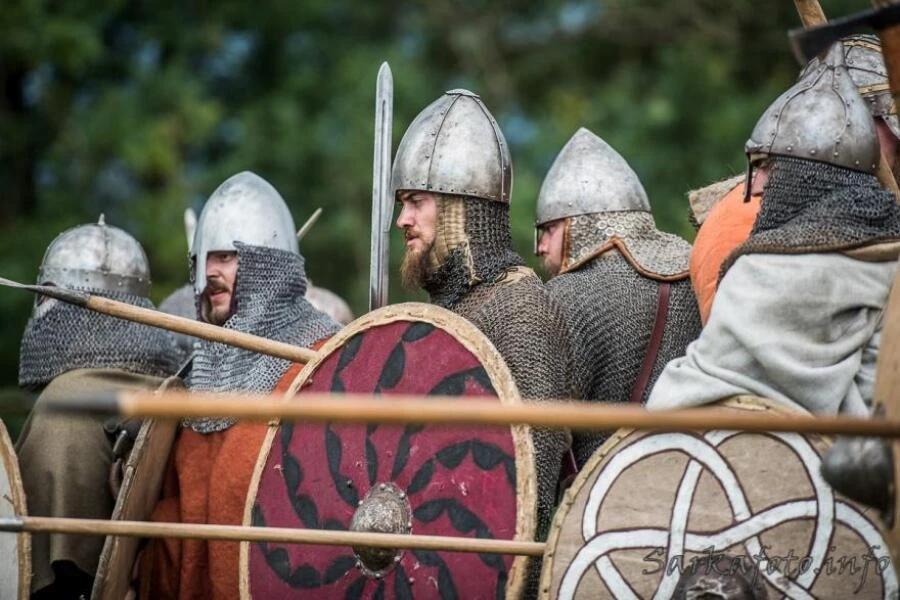
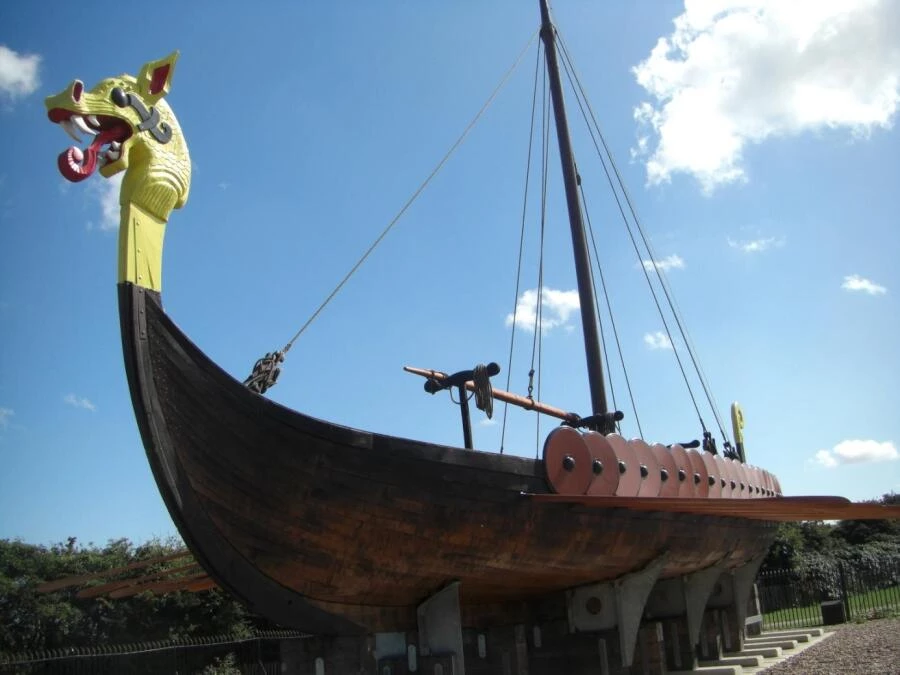
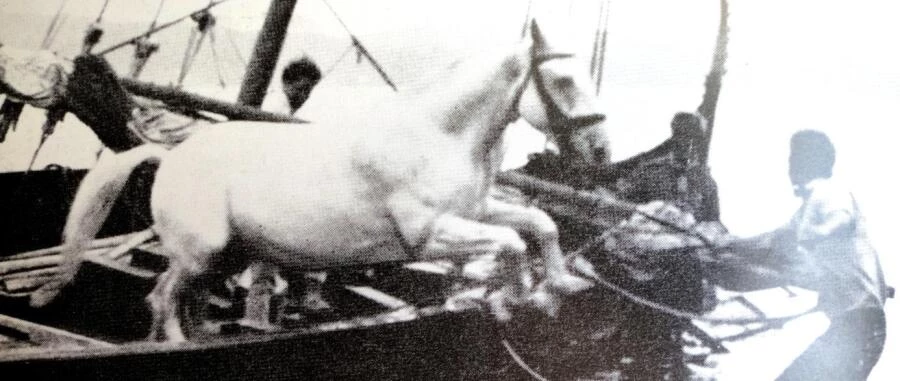
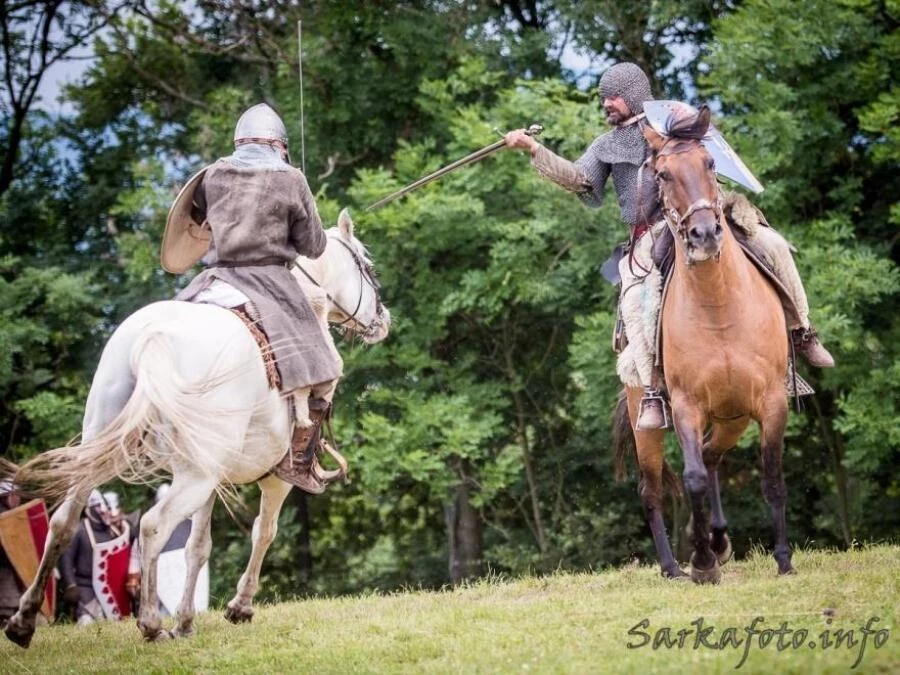
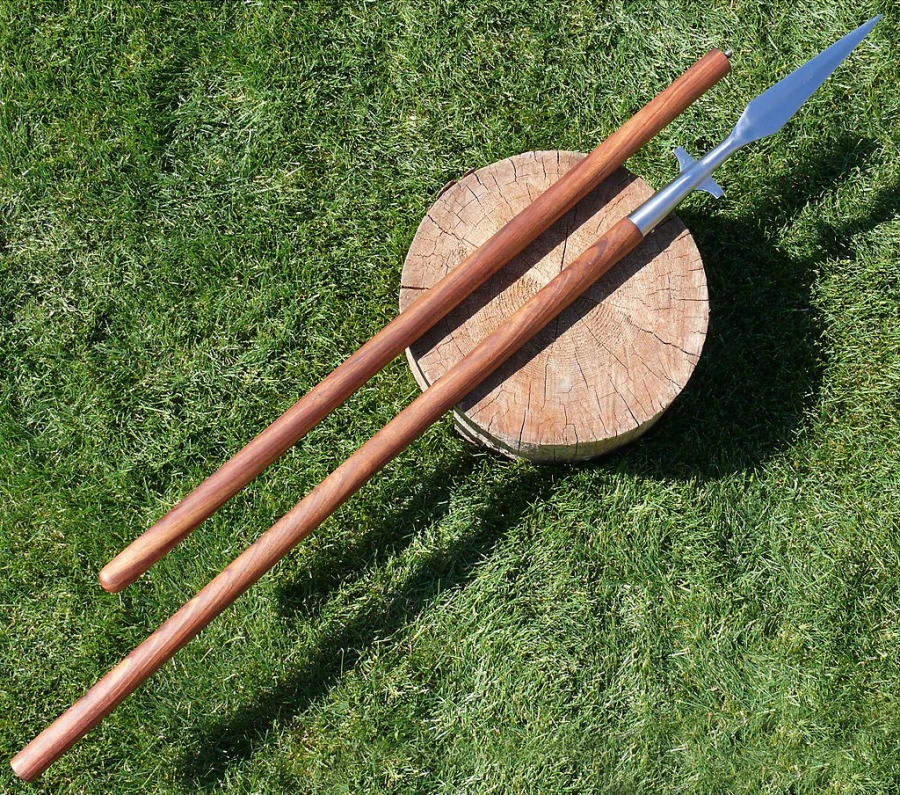
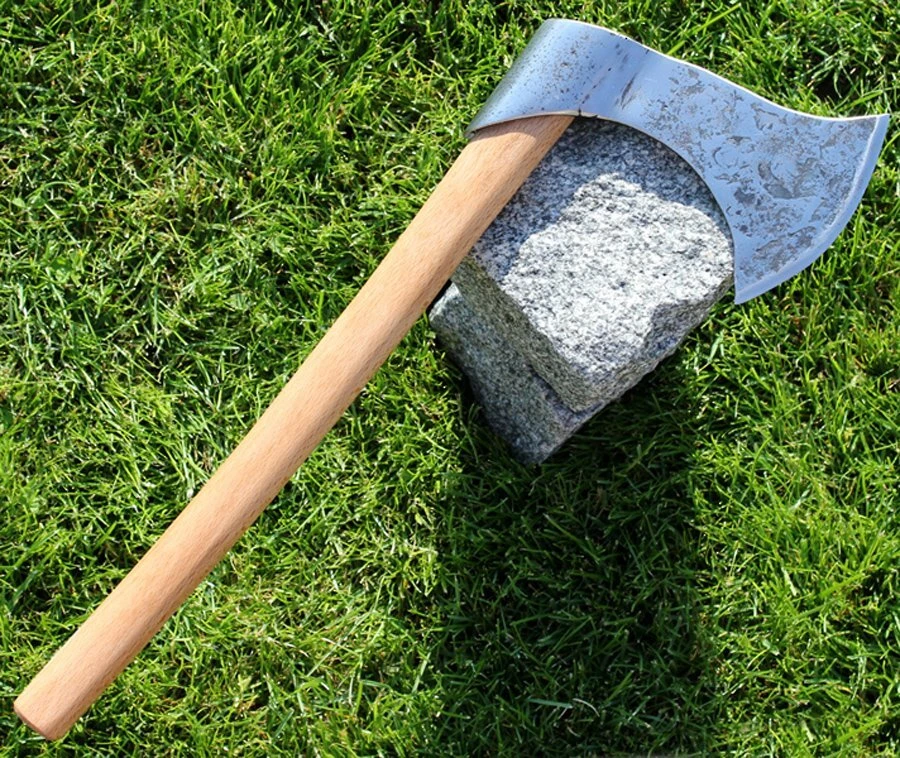
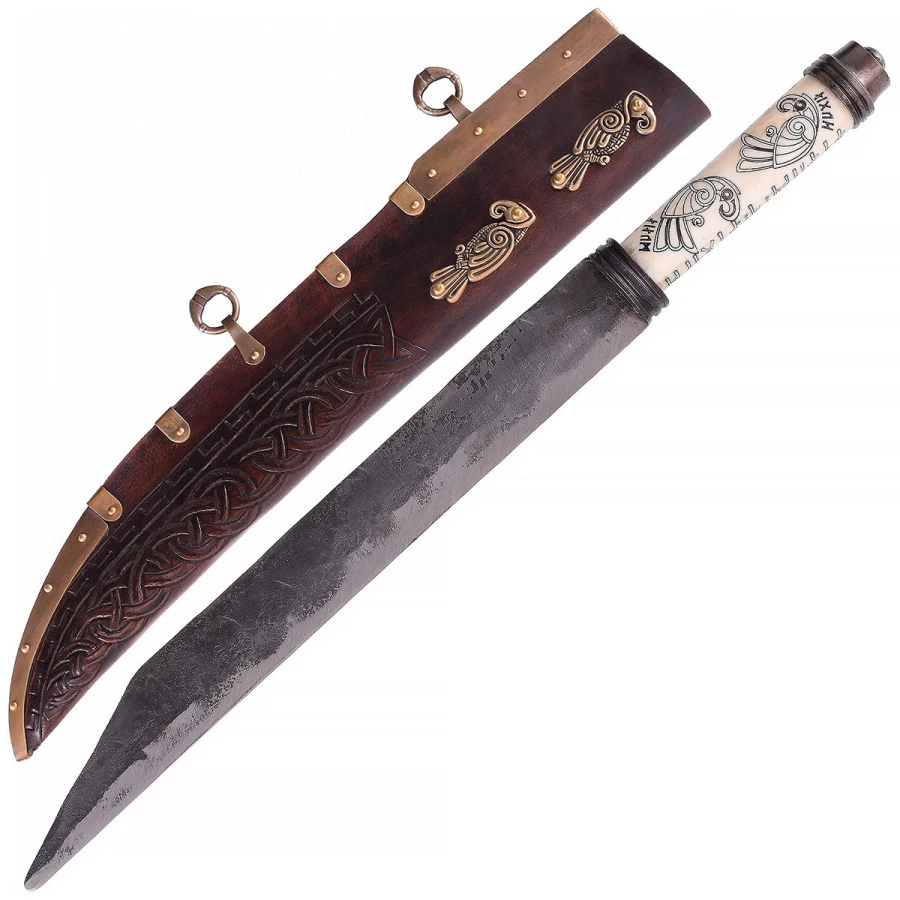
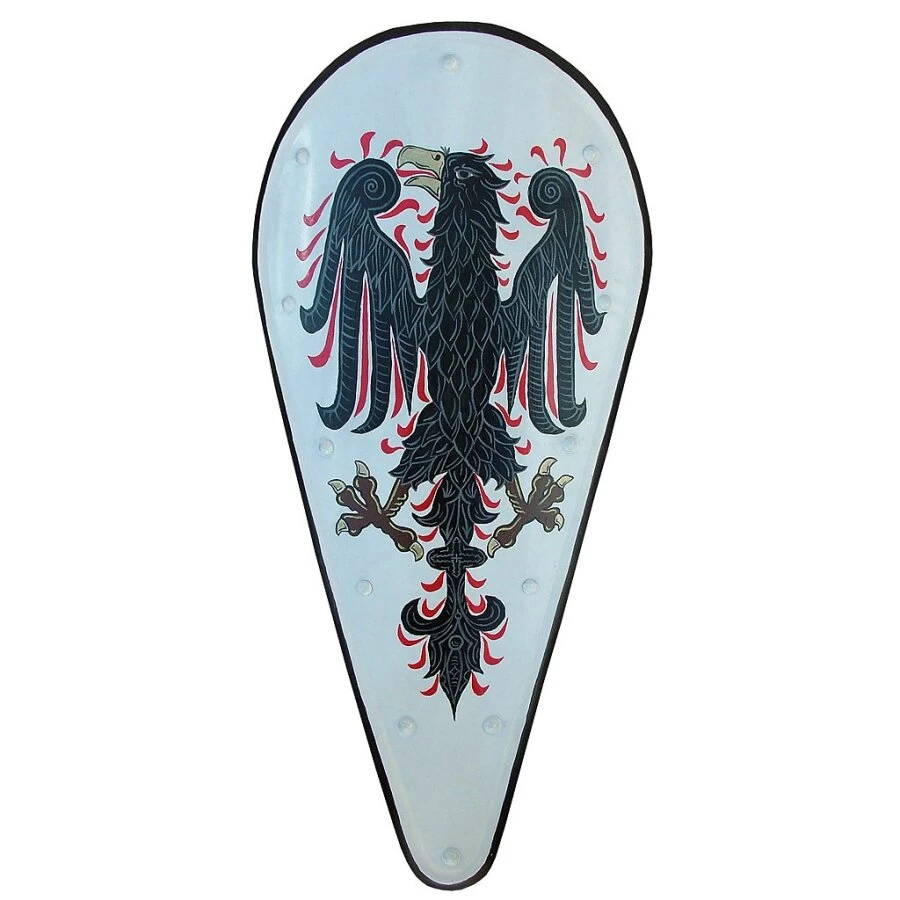
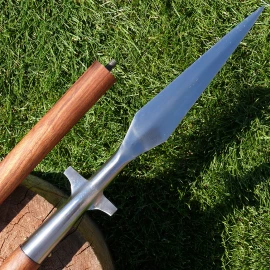
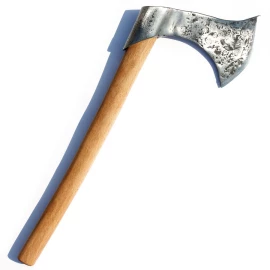
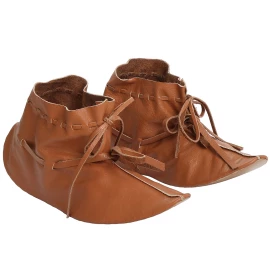
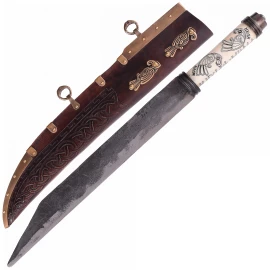
Comments